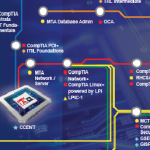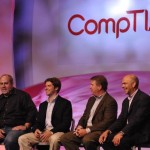I enjoyed being part of an engaging panel session at the CompTIA Annual Member & Partner Conference in London where we talked about skills and employability, and how employers continue to struggle to find the people to meet their needs.
Well how about the baby boomers (born 1946-1964) and Generation X (born 1965-1976)? We have the time, wherewithal and the experience, and more often than not the resilience to compete. That determination is manifesting itself by standing our ground – we won’t give in easily, to age or to retirement plus we can handle the demands placed on us.
I suppose technology isn’t helping us, but is it really tech’s fault? Haven’t we brought this on ourselves? Are we just obsessed with being online and staying connected for more and more hours throughout the day, waking at 4am for a sneak peek at email and responding to the last of the day’s messages with drooping eyelids 20 hours later? Moreover, if you are in a business that covers all time-zones of the world, does it ever stop?
We need to remind ourselves what humans are good at and take a good look at the work and roles that machines cannot do as well as humans in future. We need to reassert and take control, yet isn’t it ironic that we have become robotic in automating our lives, at precisely the time that robots endeavour to become more human.









